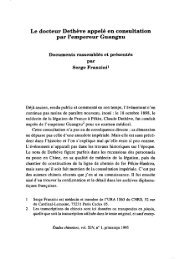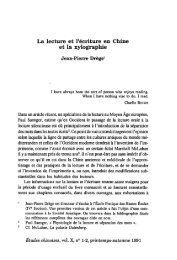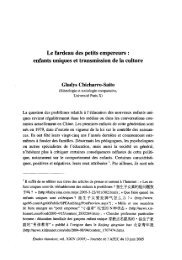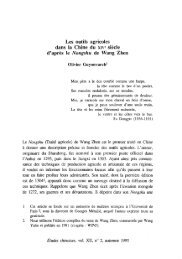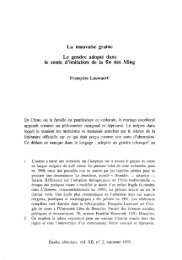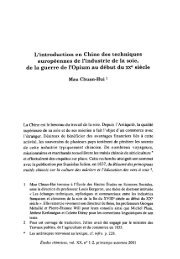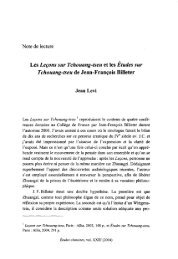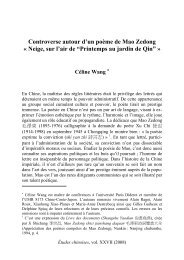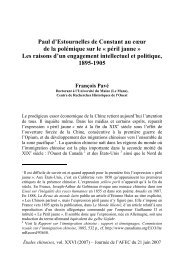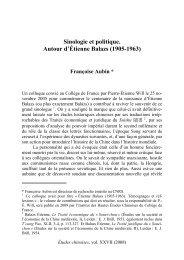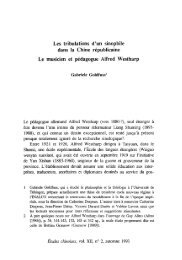Create successful ePaper yourself
Turn your PDF publications into a flip-book with our unique Google optimized e-Paper software.
Comptes rendus<br />
commoditization), except for the fact that its économie actors were not<br />
atomized individuals but households. On the other hand, Marmé favors<br />
those authors who classify the Ming period as "late impérial" over those<br />
who call it "early modem," because of the continuous dominating effect<br />
state structures had on the development of market forces.<br />
As for Suzhou's économie importance, in his introductory remarks,<br />
Marmé is careful not to see Suzhou's central status as eternal, or preordained:<br />
he makes some welcome comparisons with Hangzhou, or even<br />
Huzhou. Suzhou was chosen by Zhang Shicheng as a capital in late Yuan<br />
times, apparently partly because it had by then gained weight vis-à-vis<br />
Hangzhou and Ningbo, since unlike the latter cities Suzhou had capitulated<br />
to the Yuan without a fight. However, as Marmé convincingly shows,<br />
that dominance was not secure at ail; if the Ming had been really as hostile<br />
to Suzhou as many traditional accounts would hâve it, Suzhou's newfound<br />
eminence could hâve been as ephemeral as Zhang Shicheng's was.<br />
Nor does Marmé suppose the économie development of Suzhou's hinterland<br />
as having culminated in the Ming, after it presumably had achieved<br />
its dominance over China: there was still further development to come, for<br />
example in water management. In Marmé's actual description of the économie<br />
development from Song to mid-Ming times, however, one would<br />
wish perhaps for some more critical analysis: in the lists of "important"<br />
processed and semi-processed goods mentioned by Marmé ("embroidery,<br />
the mounting of pictures, pottery-making, copperwork, printing, lacquerwork,<br />
wine-making, the weaving of mats, rattan pillows, gauze caps, fine<br />
brushes, jade carvings, food products - plus silver work, needles, iron<br />
work, tin work, wood work, tile-making, fine paper, lanterns, fan bones,<br />
gauze towels, willow chests, cattail-rush shoes, jewelry, antiques, and the<br />
copying of books and pictures"), one would like to know which were<br />
crucial, which were secondary; which were culturally, which were economically<br />
relevant; which were both? For instance, it is obvious that<br />
amongst thèse various endeavors, the textile industry was of primary importance,<br />
and Marmé makes the point, of which I was not aware, that there<br />
were - temporary - climatic reasons why cotton had to be processed in<br />
Jiangnan rather than in Northern China (p. 137). However, when in his<br />
416



